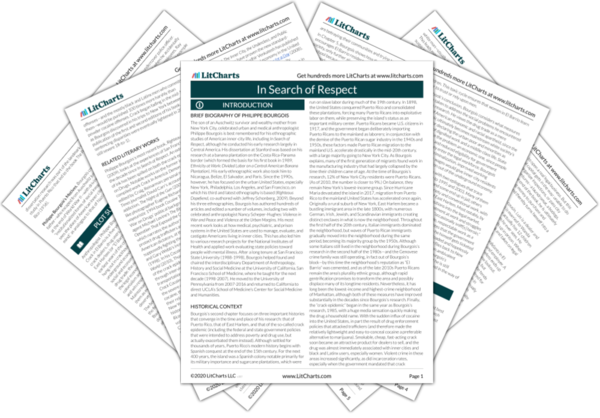Bourgois turns from the pitfalls of anthropological research methods to the dangers in anthropology’s communication to the public. Lewis’s study, like Bourgois’s, looks at how culture and poverty intersect in El Barrio—but Lewis’s book was misinterpreted as arguing that culture
causes poverty. The negative social stigma perpetuated by this interpretation explains why Bourgois has spent this introduction outlining his intentions, interest in his subjects’ wellbeing, and opposition to U.S. policy. Twenty years after the crack epidemic, however, it is debatable whether In Search of Respect may have perpetuated some of the same stereotypes that were deployed to villainize and oppress the effected communities. Bourgois appears to have the pure intentions, but in turning to the case of Lewis’s book, Bourgois himself shows that good intentions are not enough.
